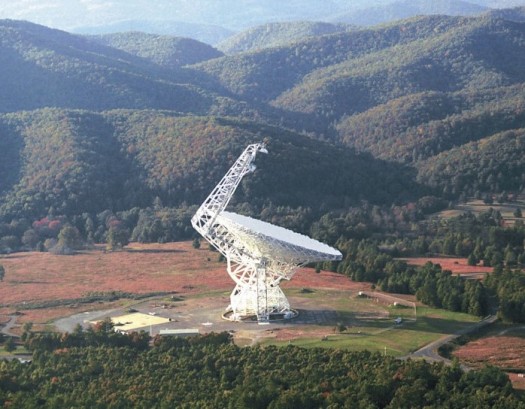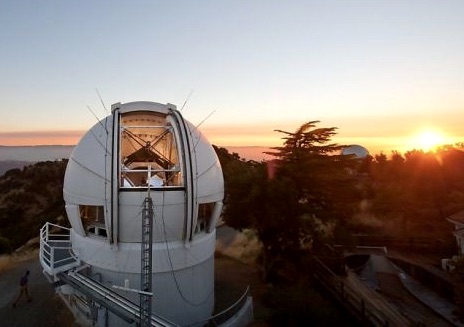
Searching for technologically advanced civilizations inhabiting distant exoplanets is the astrobiological equivalent of swinging for the fences.
While much of the search of extraterrestrial life is now focused on microbes and chemical biosignatures in exoplanet atmospheres that would likely be byproducts of life, the search for extraterrestrial intelligence (or SETI) takes a very different approach.
SETI practitioners scan the skies for radio signals, and now laser signals, that are irregular and different from what is naturally produced. Were such a signal to be detected, then it would be studied as the potential work of extraterrestrial life that is highly advanced — perhaps far more so than we Earthlings.
This search has been going on since Cornell University astronomer Frank Drake began it 1960 and has advanced (in steps large and small) ever since. The biggest financial boost to the search took place five years ago when techno-billionaire Yuri Milner, in partnership with Stephen Hawking and other prominent scientists, set up the Breakthrough Listen project with $100 million to buy telescope time and to greatly expand the SETI search.
And as part of that expanded search, radio telescopes focused on the crowded galactic center of the Milky Way for 600 observing hours. The thinking was that stars and likely exoplanets are most plentiful in that central region — some 60 million stars in the line of sight into the galactic center at low astronomical frequencies; 500,000 at higher frequencies — and so the chances of finding a signal were perhaps higher.
Some preliminary and partial results of that effort were recently released and, unfortunately, no signals were found. That has been the fate of all SETI searches so far.
But as SETI scientists explain, the night sky is huge and the percentage of stars (and their exoplanets) that have been sampled remains quite small.

This latest effort was unique in that it was the “most sensitive and deepest targeted SETI” survey ever done of the galactic center, as the SETI scientists write in a study set to be published in the Astronomical Journal (a preprint is currently available on the arXiv).
Observations of the galactic center were a priority for Breakthrough Listen from the start, as they have been going back to the early days of SETI. The center was identified as prime area for SETI studies in Project Cyclops, the 1971 report on the search for intelligent life commissioned by NASA.
“When we look towards the Galatic Center, our line-of-sight encounters the largest number of stars compared to any other direction in the sky,” Vishal Gajjar, project scientist for Breakthrough Listen and a fellow in the astronomy department of the University of California, Berkeley, wrote in an email. He is also lead author on the Astronomical Journal paper.
“As we yet do not know what are the ideal conditions for life to emerge, looking at a large sample of stars enhance the prospects of potentially encountering a life-bearing world with intelligent life on it.”

Gajjar also said looking at the Galactic Center made sense in the context of game theory, where what is termed the “Schelling point” is a solution for a location that can be chosen in the absence of prior communication.
“For example,” he wrote, ” if you want to meet a stranger in New York but you cannot a priori decide about the place and time of such a meeting, you might choose to show up at the Grand Central Terminal at noon and expect the stranger to arrive at the same conclusion.”
“Similarly, if any sufficiently advanced intelligent civilization residing in our galaxy wants to communicate their presence to all the stars, the Galactic Center provides an ideal Schelling point to place a powerful transmitter as that would be the most known place to every other intelligent civilization.”
He wrote that the campaign is searching for two different types of extraterrestrial intelligence (ETI) beacons — signals which are extremely narrow in frequency and signals which exhibit artificial or non-physical dispersion, the kind of “radiation leakage” that comes from technology.
The first type is a signal with extremely narrow bandwidth in frequencies that are not known to occur in nature and can only be produced through engineering such as our communication devices. Similarly, signals with artificial dispersion are also not physical and defy our understanding of the interstellar medium in the Milky Way. However, he wrote, intelligent societies such as ours can very easily produce and transmit them. Thus, both of these kinds of signals serve as ideal beacons that can be used by advanced intelligent life to communicate across large distances in the Milky Way.
“We conducted some of the deepest searches for these signals for the first time towards the Galactic Center,” Gujjar said. “So far, in the entire 60 years history of SETI, no other study has ever been conducted at similar sensitivities towards the Galactic Center. Although we didn’t find any sign of such beacons, ours is the most comprehensive study of the Galatic Center to search for evidence of intelligent life.”
He said that numerous more papers from the study will be coming.
It must also be said that while the Galactic Center contain a very large number of stars to study in relatively close proximity, it also is home to many stars that are exploding (going supernova) and sending out extremely powerful radiation that may well be fatal to life. So while the Center is a logical place to look for intelligent life, it also is a challenging neighborhood for life to emerge and evolve.

Breakthrough Listen uses radio astronomy from the Parkes telescope in Australia, the Green Bank Observatory in West Virginia and the MEERKAT array in South Africa for a wide range of SETI activities. The Automated Planet Finder Telescope at the Lick Observatory in California is also used to search for laser messages potentially sent from afar.
These instruments regularly record what look like signals from space but are actually due to local interference from Earth. In April and May of 2019, the team caught something different — a narrow beam transmission that lasted 30 hours and came from the area around Proxima Centauri.
That’s the closest star system to us, only 4.2 light-years away, and it’s known to be orbited by at least two planets. The signal, dubbed BLC1, also appeared to shift in a way consistent with coming from a planet orbiting the star.
However, it’s still far too early to start celebrating the discovery of alien life. BLC1 is a candidate signal that needs to be analyzed and it’s considered highly doubtful that intelligent aliens live in the next solar system over.
The Milky Way galaxy has an estimated 300 million exoplanets and is almost 14 billion years old. To find another intelligent species existing at the same time as us just a few light years away would be exceedingly improbable. If those aliens are also using radio frequency technology at the same time as we are, that’s an even bigger coincidence.
This is not the first signal that could be interpreted as having artificial origins. The famous “Wow” signal detected in 1977 by SETI researchers is another example. That one didn’t pan out, but BLC1 could be the first serious contender in decades. Follow-up observations have failed to detect the signal again, a step necessary to confirm that the signal was a technosignature.
A paper by other astronomers released 10 days before the news report about BLC1 describesd the detection of “a bright, long-duration optical flare, accompanied by a series of intense, coherent radio bursts” from Proxima Centauri also in April and May 2019. Their findings have not been directly tied to the BLC1 signal, but the highly energetic flares imply that planets around Proxima Centauri and other red dwarf stars are unlikely to be home intelligent life or other currently known organisms.

Breakthrough Listen is part of the Breakthrough Prize Initiative The largest research effort ever to search for intelligent life beyond Earth, it is being run out of the Berkeley SETI Research Center at the University of California, Berkeley, and has associations with the pioneering SETI Institute nearby in the Bay Area. Here is a layman’s description of how the astronomers are using radio telescopes to make their surveys, and how they need your help via SETI@Home.
So far Breakthrough Listen has made public 2 petabytes of data collected from its observations. One petabyte is 1,125,899,906,842,624 bytes of data.
Instead of building their own telescopes, the Berkeley program decided to use the Breakthrough Listen funds to buy time on existing radio telescopes they have upgraded with very wide-band recording and digital signal processing equipment. The SETI Institute has many science programs but also raised funds to build a radio telescope array in northern California.
The Breakthrough Listen program includes a survey of the 1,000,000 closest stars to Earth. It addition to the galactic center campaign, Breakthrough Listen examines the full galactic plane and, beyond the Milky Way, it listens for messages from the 100 closest galaxies to ours.
The instruments used are 50 times more sensitive than existing telescopes dedicated to the search for intelligence, Breakthrough Listen reports. The radio surveys cover 10 times more of the sky than previous programs. They also cover at least 5 times more of the radio spectrum – and do it 100 times faster. They are sensitive enough to hear a common aircraft radar transmitting to us from any of the 1000 nearest stars.
The initiative is also carrying out the deepest and broadest ever search for optical laser transmissions. These spectroscopic searches are 1000 times more effective at finding laser signals than ordinary visible light surveys. They could detect a 100 watt laser (the energy of a normal household bulb) from 25 trillion miles away.
Breakthrough Listen is committed to operate for 10 years and will spend $100,000,000 on its mission.
